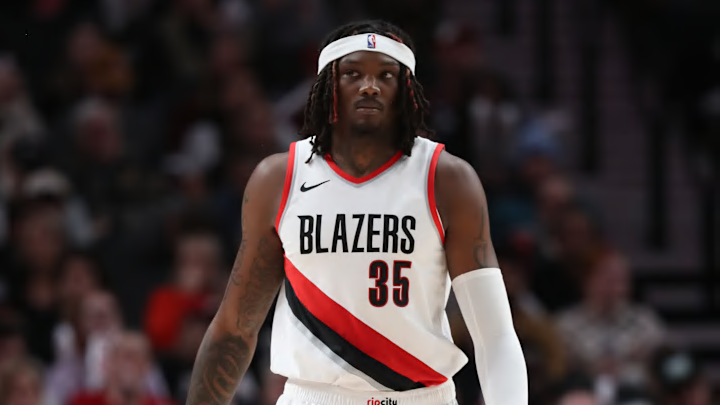The Portland Trail Blazers have been accumulating young assets, which is the correct approach to rebuilding in the early stages of their post-Damian Lillard era. However, Portland has a half-baked roster heading into training camp. And as a result, they seem open to moving multiple valuable players, including Anfernee Simons, Jerami Grant, Deandre Ayton, and Robert Williams III.
ESPN's Zach Lowe emphasizes the Blazers' depth in a recent podcast episode of "The Lowe Post," stating, "There's real representative NBA talent almost up and down the full [roster] once you get down to 12-13 guys on this team."
A significant portion of that depth lies in the center position, with four players—Ayton, Williams, Donovan Clingan, and Duop Reath—capable of substantial minutes. Landing Clingan with the No. 7 overall pick was a steal for the Blazers, but it also caused a center logjam that they must address.
Blazers must trade one of Ayton or Williams III
"Clingan is super exciting... they have to force-feed him minutes right off the bat. He's got to be the backup five; I don't care what that means for Robert Williams or Deandre Ayton. What it really means is they should start trading these guys, and probably will, because I think this team is self-aware that they need another crack at the top of the draft."
If the goal is to give Clingan significant minutes immediately, current starting center Ayton makes the most sense to move. However, it could be challenging to find value, as he is the Blazers' highest-paid player at $34 million this upcoming season. Williams, on the other hand, is on a much more reasonable deal at $12.4 million.
Catch-22 surrounding Robert Williams III
Still, the question surrounding RW3 is whether the Blazers can maximize their return for him, as teams will likely want to see him consistently stay healthy before giving up significant assets. That's the catch-22 surrounding Williams and the Blazers.
The Blazers' four possible outcomes with RW3 are:
- Williams stays healthy, and the Blazers trade him
- Williams stays healthy, and the Blazers keep him
- Williams can't stay healthy, and the Blazers trade him
- Williams can't stay healthy, and the Blazers keep him
While Williams' health is not as black-and-white as that, these four outcomes highlight the challenge surrounding what the Blazers and Cronin should do about their center logjam. It also means that the Blazers' best option may be to hold onto Williams.
Why Portland should hold onto RW3
If Williams can stay on the court, trading him for significant assets will be easier. However, at that point, the Blazers would prefer Williams over Ayton as a long-term backup center behind Clingan, especially considering their respective contracts. When healthy, Williams has proven to be an impactful player, particularly on the defensive end. At just 26, he could be considered a long-term piece in their rebuilding core.
Conversely, the Blazers will want to move him if Williams can't stay on the court. However, other teams may only be willing to gamble on his health if it's a buy-low opportunity that requires minimal assets in exchange.
Either the Blazers trade Williams when he's healthy and at peak value, or they trade him for a smaller return when he can't stay healthy. In either scenario, it wouldn't make much sense for the Blazers to want to move him. Because of this and his contract relative to Ayton, their best bet is to have Clingan, Williams, and Reath as their centers, with Ayton being the odd man out.
